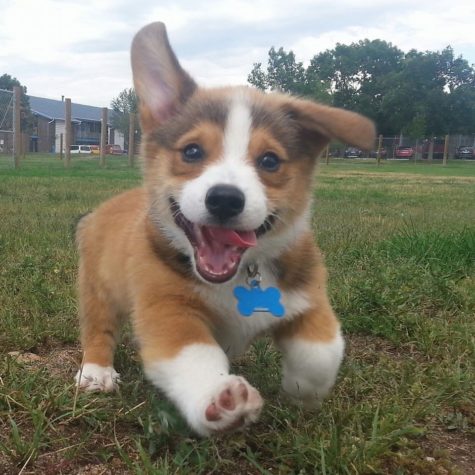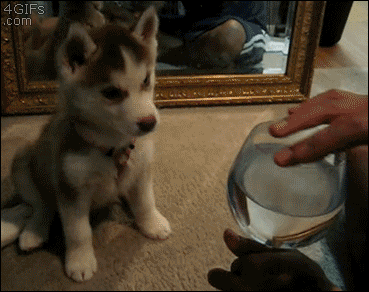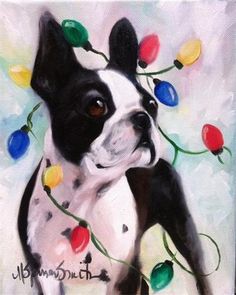Puppy Training – Reinforcements
What follows is an in depth explanation of the different forms of reinforcement, along with general guidelines about when and how to use them.
What is Reinforcement?
Reinforcement is information. It tells your puppy just what you like and don’t like. It works only on behavior that is already occurring. You cannot reinforce behavior that isn’t happening. Timing is critical. It must happen at the exact same time as the behavior you want to modify.
Positive Reinforcement
- Encourages specific behavior to be repeated.
- Something your puppy wants.
- Praise (“good puppy”). Tone of voice is very important.
- Petting, tummy rubs, etc.
- Attention, eye contact.
- Feels good.
- Use generously.
- Timing is critical – I cannot stress this enough.
- Positive reinforcement that occurs too soon teaches your puppy how to manipulate you.
- Positive reinforcement that occurs too late reinforces the wrong behavior.
- Positive reinforcements that involve food should be limited to one small mouthful. Use sparingly on specific behaviors only.
- Come when called.
- “Out.” Get your nose out of my food.
- Successful potty break outside.
- To revive interest in previously learned behaviors.
Negative Reinforcement
- Discourages specific behavior.
- Something your puppy wants to avoid.
- Verbal correction (“NO”), tone of voice important.
- Physical correction.
- Hard squeeze of muzzle or feet for jumping or biting.
- Sharp jerk with a leash, or hand on collar.
- Scruff shake.
- Quick spin through the air.
- Squirt bottle.
- Shake can or other sharp noise.
- Feels bad.
- Use sparingly.
- Timing is critical – I cannot stress this enough.
- Negative reinforcement that occurs too late is called “punishment” and does nothing to educate your puppy.
- Negative reinforcement that occurs too soon may actually prevent the behavior you are trying to encourage.
- Negative reinforcements should be only just strong enough to make an effective impression, but not so strong as to cause fear.
Jackpots
- A surprising reward 10 times bigger than what your puppy is used to (treats are acceptable).
- Can be used to mark a sudden breakthrough.
- And also as a morale booster.
- Will help your puppy maintain a positive attitude about you, and the training.
- Do not do this very often or it will use it’s effectiveness.
Conditioned Reinforcement
- Teaches your puppy to respond to the following:
- Verbal praise – an all purpose positive reinforcement.
- Verbal correction – an all purpose negative reinforcement.
- Other signals – reinforcement for specific behaviors.
- Sounds such as bells, clickers, whistles.
- Motions such as hand signals, or specific actions.
- Lights, or anything your puppy responds to visually.
- Establishes more exact communication.
- Tells your puppy exactly which part of a behavior you like the best.
- Reinforces behavior without interrupting it.
- Has more power than ordinary reinforcements because:
- It works on an unconscious level.
- Can be paired with several ordinary reinforcements such as:
- Food, water, and petting.
- Tummy rug, treats, focused attention.
- Loud noise, squirt bottle, leash correction.
- It says, “You’re right!” which is important information, and a valuable reinforcement by itself.
How to establish a conditioned reinforcement
- Verbal Praise
- Pick one phrase and use ONLY for this purpose.
- “Good Puppy” or “Very Good” or “Thank You”
- Something similar to the above.
- Always use a POSITIVE tone of voice.
- Say the phrase when giving food, water, treats, tummy rubs, ear scratches, etc.
- Do NOT continue to say the phrase after the positive reinforcement is finished.
- Pick one phrase and use ONLY for this purpose.
- Verbal Correction
- Pick one phrase and use ONLY for this purpose.
- “Bad” or “No” or “Shame on you.”
- Something similar to the above.
- Do not use in conjunction with your puppy’s name.
- Always use a STERN demanding tone of voice.
- Say the phrase when using negative reinforcements.
- Do NOT continue to say the phrase after the incident, or naughty behavior is finished and dealt with.
- Pick one phrase and use ONLY for this purpose.
- Signals, bells, clickers, whistles, lights, etc. for POSITIVE reinforcement.
- Make the signal and give a reward.
- Do this until the signal brings the puppy to you for another reward.
- When the connection between the signal and the reward is made, begin to use the signal to reinforce behavior while it is happening.
- Use the signal for ONE behavior at a time.
- Use your conditioned reinforcements sparingly.
- Try to pick words, phrases, and or sounds that your puppy will not ordinarily hear during the course of the day.
- Do not repeat the words or sound over and over again during the action unless you have a specific reason.
How to maintain what your puppy has learned.
- Random Reinforcement.
- Positive reinforcement should be constant and consistent during the LEARNING process only.
- As soon as your puppy has learned a specific behavior, cooperation is expected.
- Positive reinforcement is given only when the behavior is done quickly, or unusually well.
- Do not use random reinforcement to eliminate unwanted behavior.
- Avoid pampering and spoiling.
- If positive reinforcement is too easy for your puppy to achieve, the desire to try harder will NOT be reinforced, and you will get less and less instead of more and more.
- If negative reinforcements are easy to ignore, your puppy will continue to test established boundaries, and you will find yourself in a continual struggle for authority.
- Variable Schedule.
- Do NOT use when working to ELIMINATE behavior.
- Use when the behavior has been perfected.
- Gradually phase out positive reinforcements.
- Limit yourself to reinforcement, every 3rd, 5th, 7th, etc.
- Every now and then throw in a “jackpot.”
- Keep your puppy guessing.
- A long schedule is the most effective.
Exceptions to the variable schedule
- When you are working to eliminate an unwanted behavior.
- When solving a puzzle, or taking a test.
- When it is necessary to make a choice between two or more items, or actions.
- Whenever independent thinking is required, some sort of feedback is necessary, and can be in the form of conditioned reinforcements.
Written by: Shirley Janner
Note:
You are welcome to share this post but ONLY IF you give credit and a link back to Teach Your Dog To Behave or shirleytwofeathers.com.
Related Posts
Worth Exploring
- Dog Training School Pics by shirleytwofeathers - 1 Comment
- Some Cute Dog Quotes by shirleytwofeathers - No Comment
- Training Do’s and Don’ts by shirleytwofeathers - No Comment
- Holiday Toxins and Dangers by shirleytwofeathers - No Comment
- Four Good Reasons To Train Your Dog by shirleytwofeathers - No Comment
John kleist: Dog Training School Pics




Leave a Reply